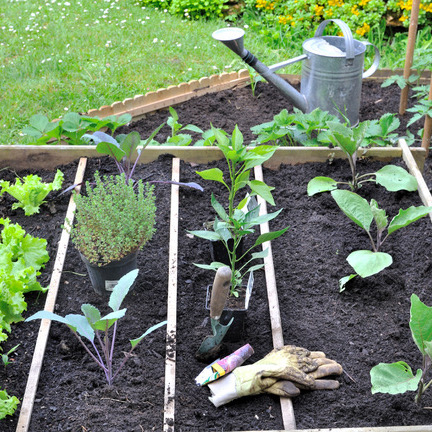Starting a Vegetable Garden

With rising food costs and a better understanding of the fact that eating the right food can better our health, there is no time than the present to start your own vegetable patch! It is an investment that will not only pay dividends in saving you money and eating healthier, tending your garden is also a great form of exercise and can improve your mental health. So start planning for a vegetable garden this summer and follow these easy steps to start off on the right foot.
1. Find a sunny spot.
Sunlight is a must as vegetables need full sun, at least 6 to 8 hours of direct sunlight at minimum. Also ensure that you have easy access to a water source as you will need to water your garden frequently during the first few weeks after seeds germinate or seedlings are transplanted. This will help these fragile plants produce strong roots and stems. Once your plants are established however it is better to give your garden a long drink every few days. Once you have settled on an area plan to start off small, a good size for a beginners garden is 6 x 6 feet.
2. Prepare your soil
For the best harvest, your vegetable garden needs the best soil available. Rich, healthy soil is something you know when you feel it: It’s easy to dig and drains well. Raised garden beds or container pots are an easy option if you have poor soil on your property. If you are using soil on your property, remove weeds and stones, and rake it level so it’s easy to manage. You will want soil that is dark, crumbly, and literally full of life so no matter what the natural texture may be, all soil can be improved over time by incorporating organic matter into it.
3. Think about what vegetables you love to eat
Now that you have your garden prepared it’s time to decide what you will place and how much of each. Many beginners make the mistake of planting too much of one thing, especially if they are a smaller household. Also be mindful of vegetables like tomatoes, peppers, and squash that will provide throughout the season, so you may not need many plants to serve your needs. Other vegetables, such as carrots, radishes, and corn, can be harvested only once and then would need to be replanted. Whatever vegetables you choose be sure to plant according to instructions to ensure they have the area they need to not only survive, but to thrive.
4. Stop weeds and pests in their tracks
Weeds of course compete with your vegetables for light, water, and nutrients, so it’s important to keep them to a minimum. A mulch of any sort will keep weeds at bay around larger plants like tomatoes but in other areas use a hoe to discourage any weed seedlings that do pop up. It is also important to be ready to deter pests of any sort. For larger pest such as deer and rabbits, which can wreak havoc in an edible garden, consider a fence that extends at least 6 inches beneath the soil. To deter smaller pests like insects consider planting marigolds that not only add a splash of colour to your garden but are touted with the benefit of keeping the bugs away!

